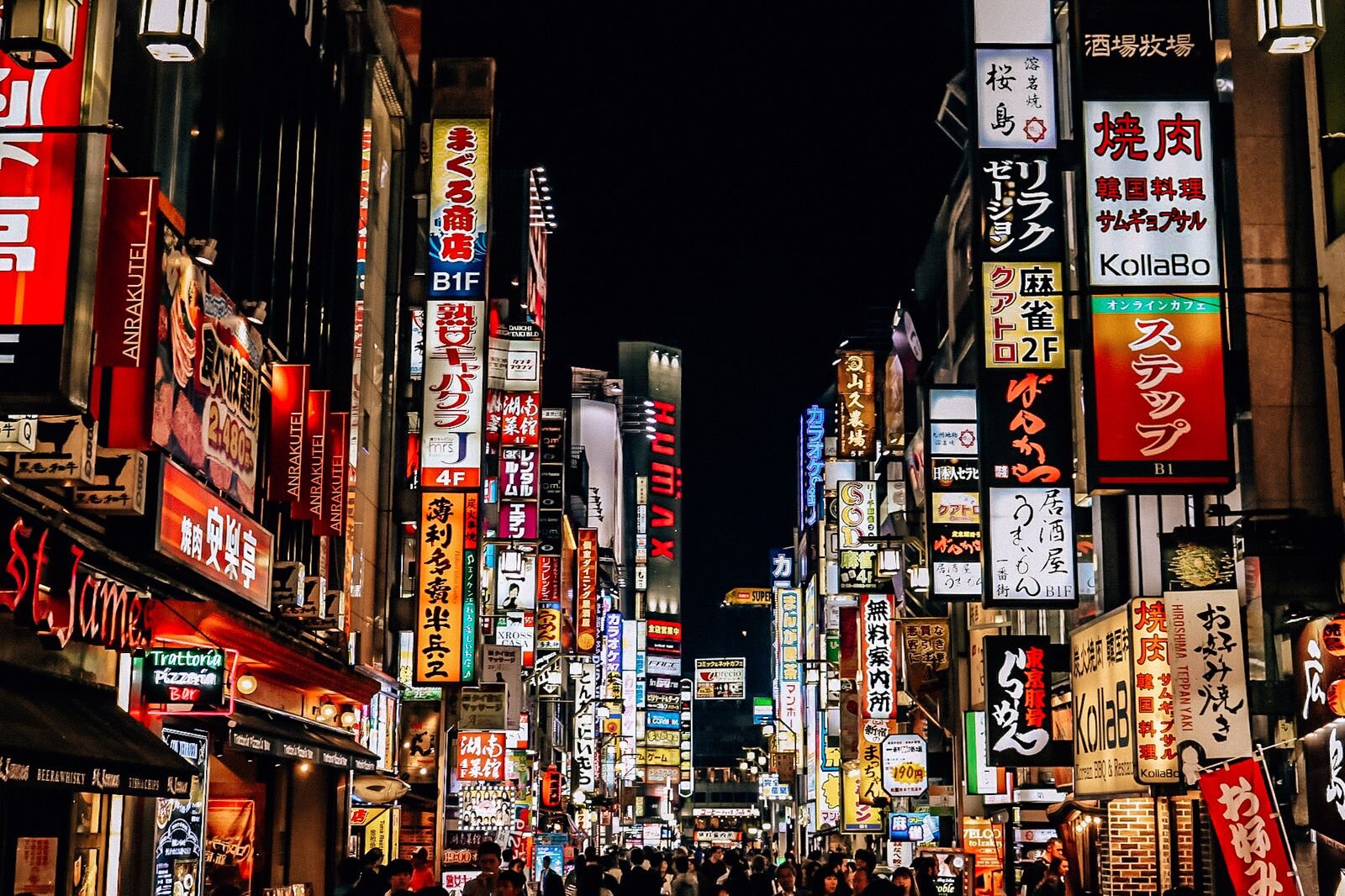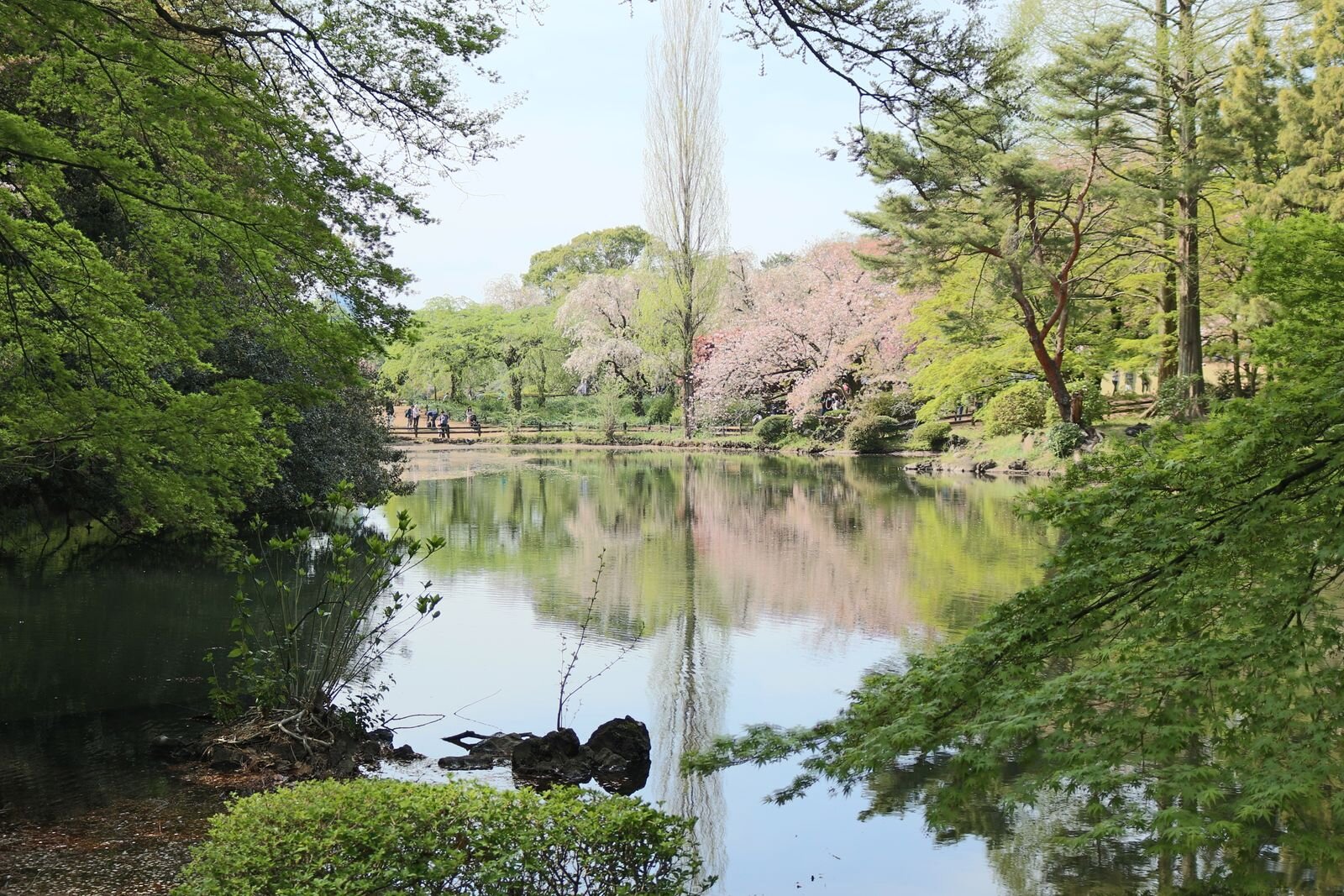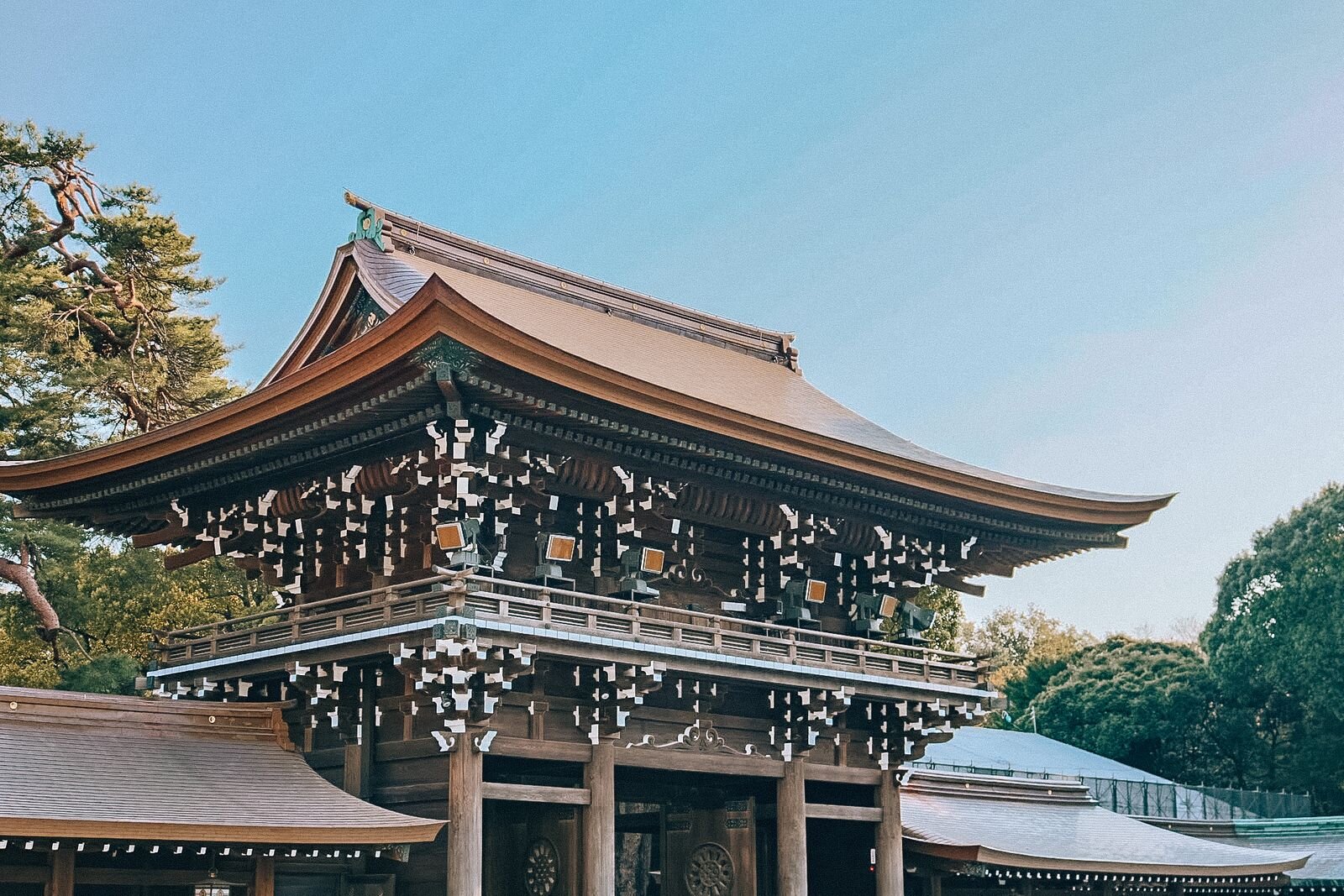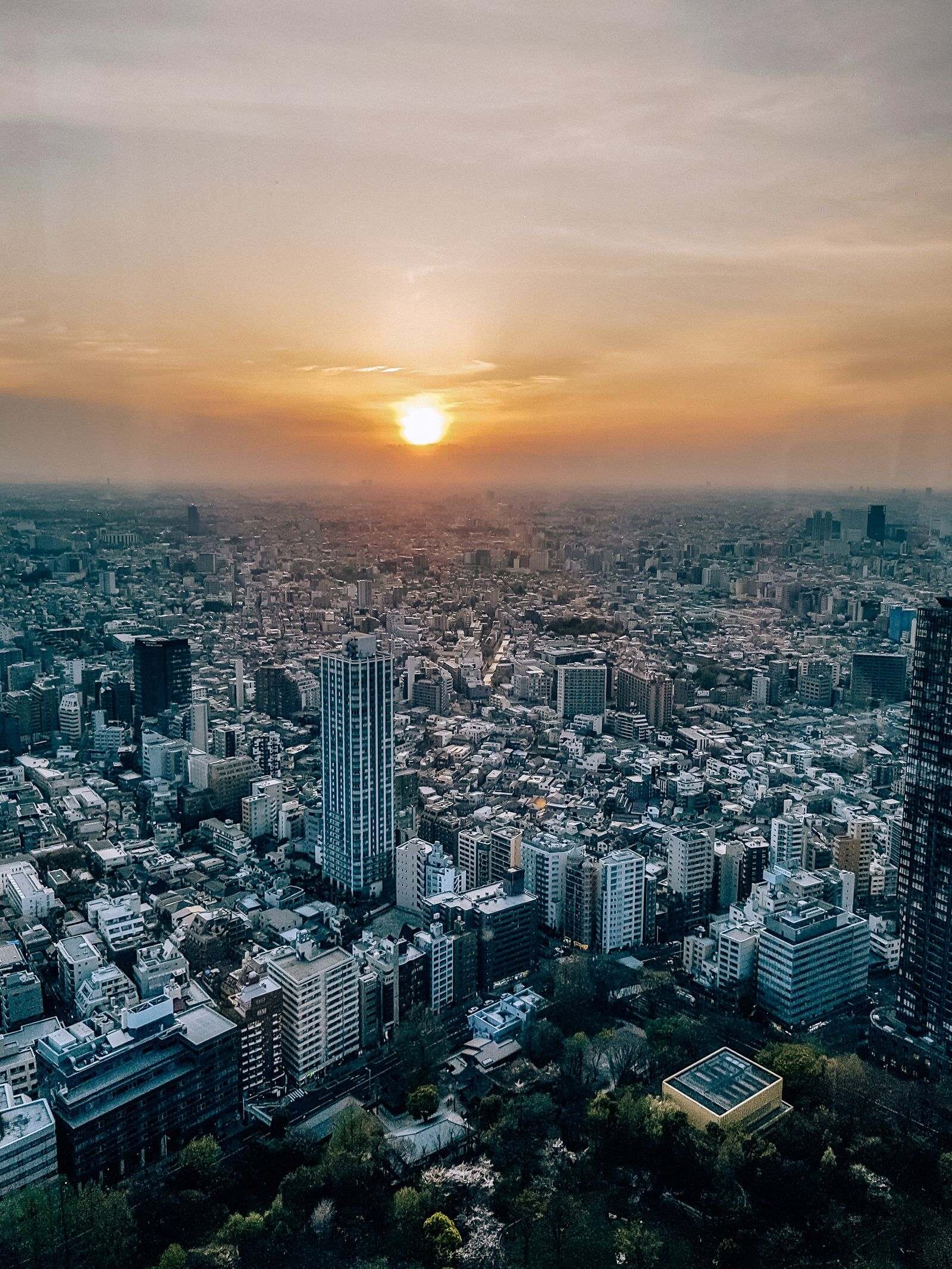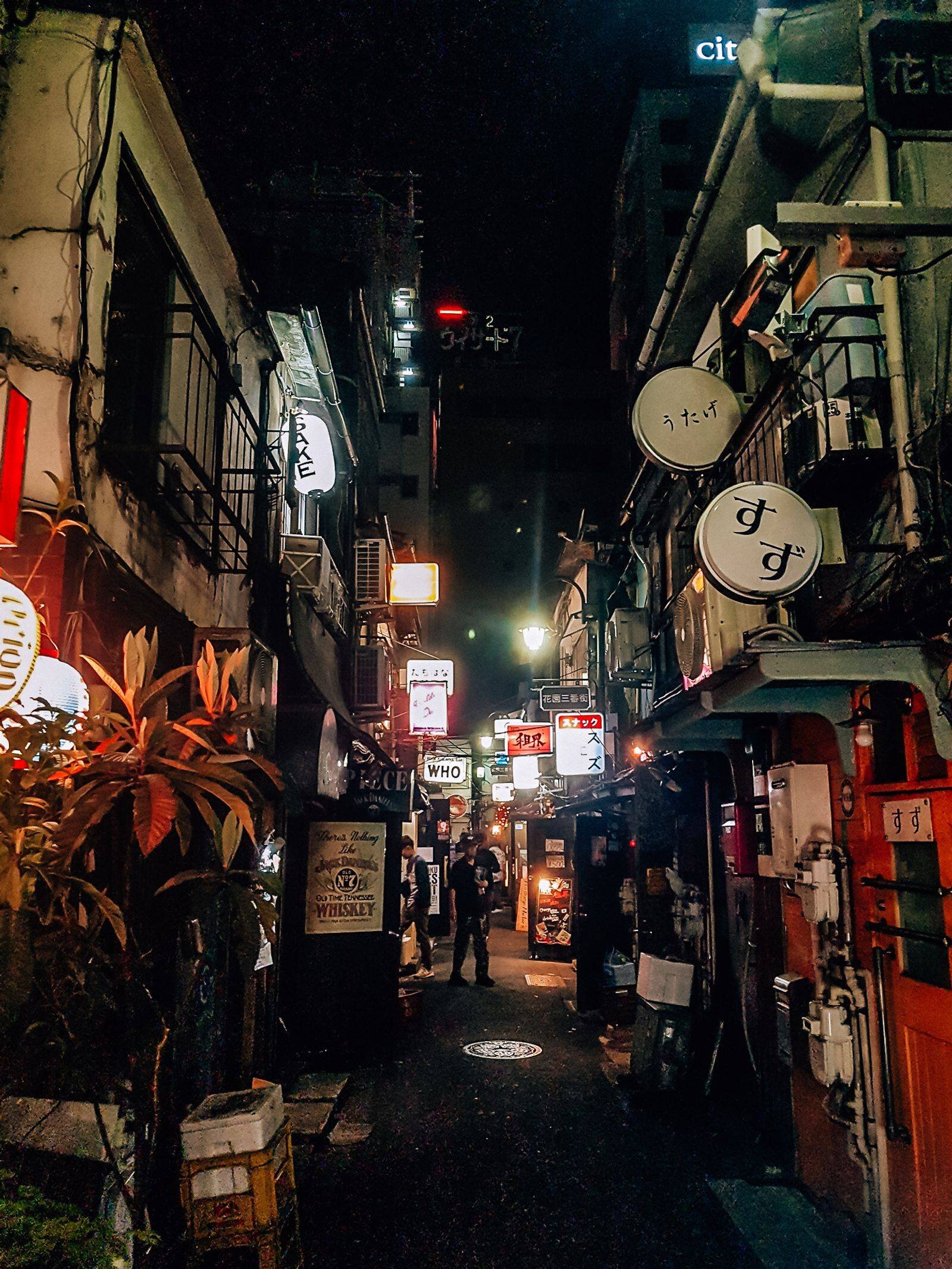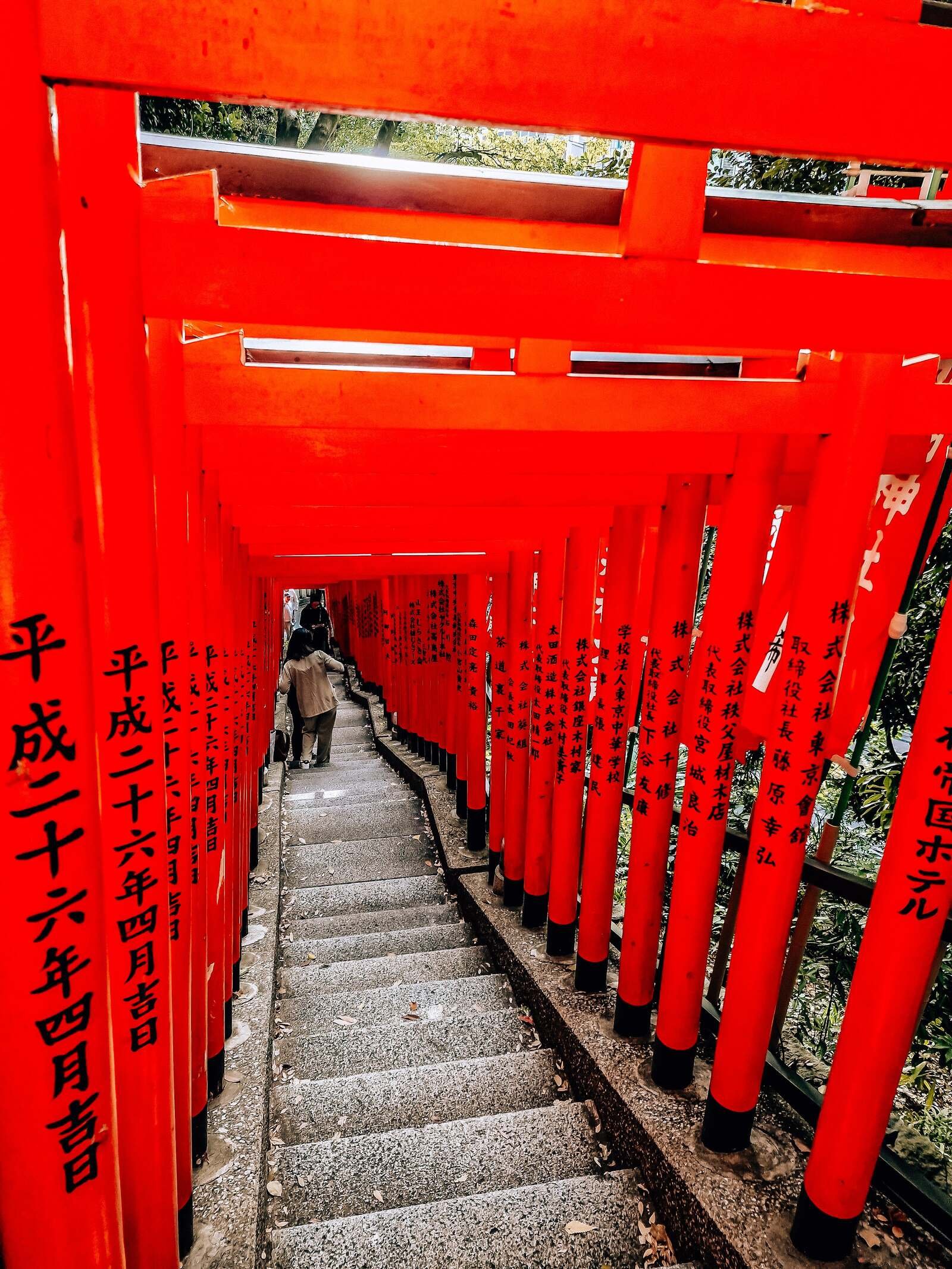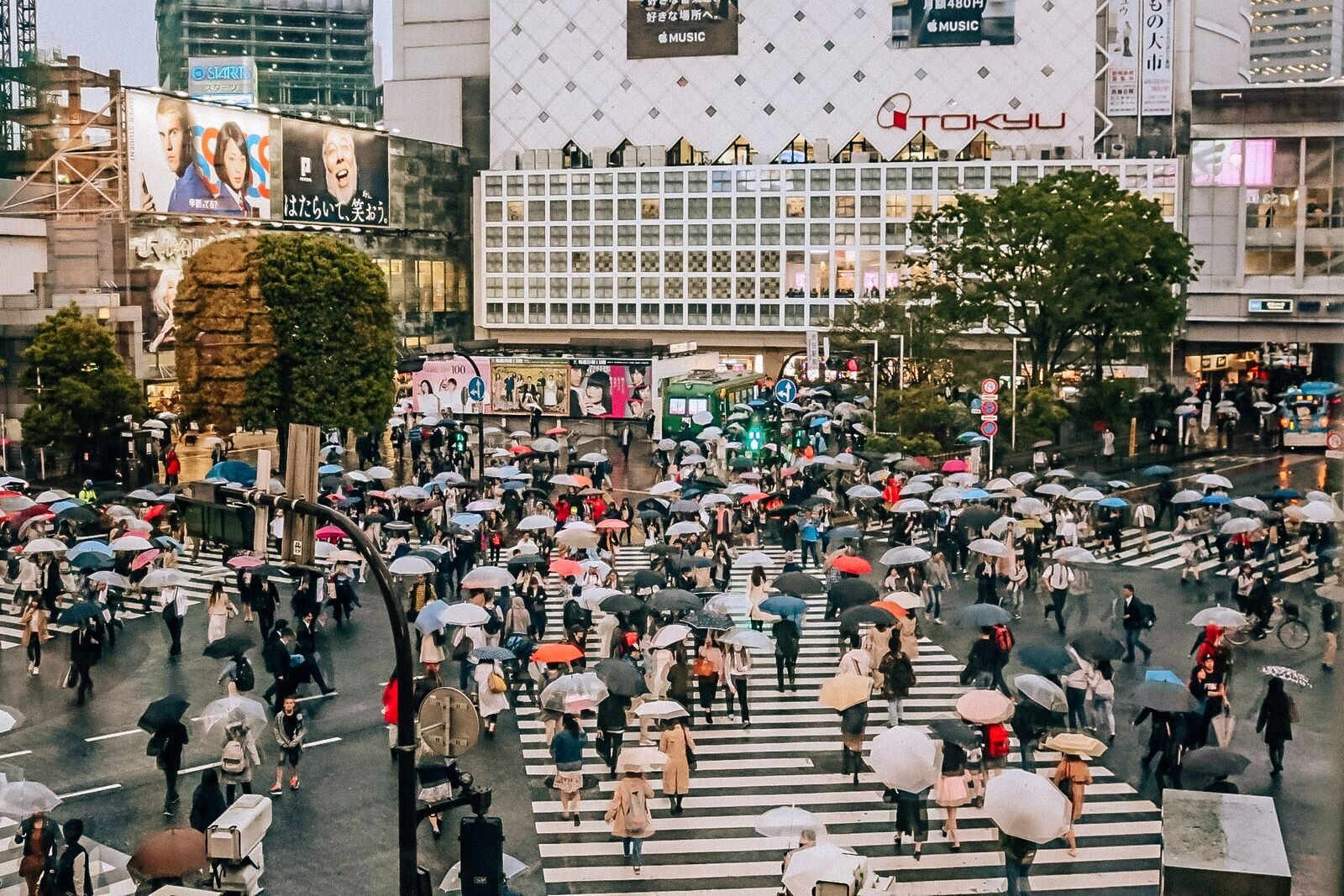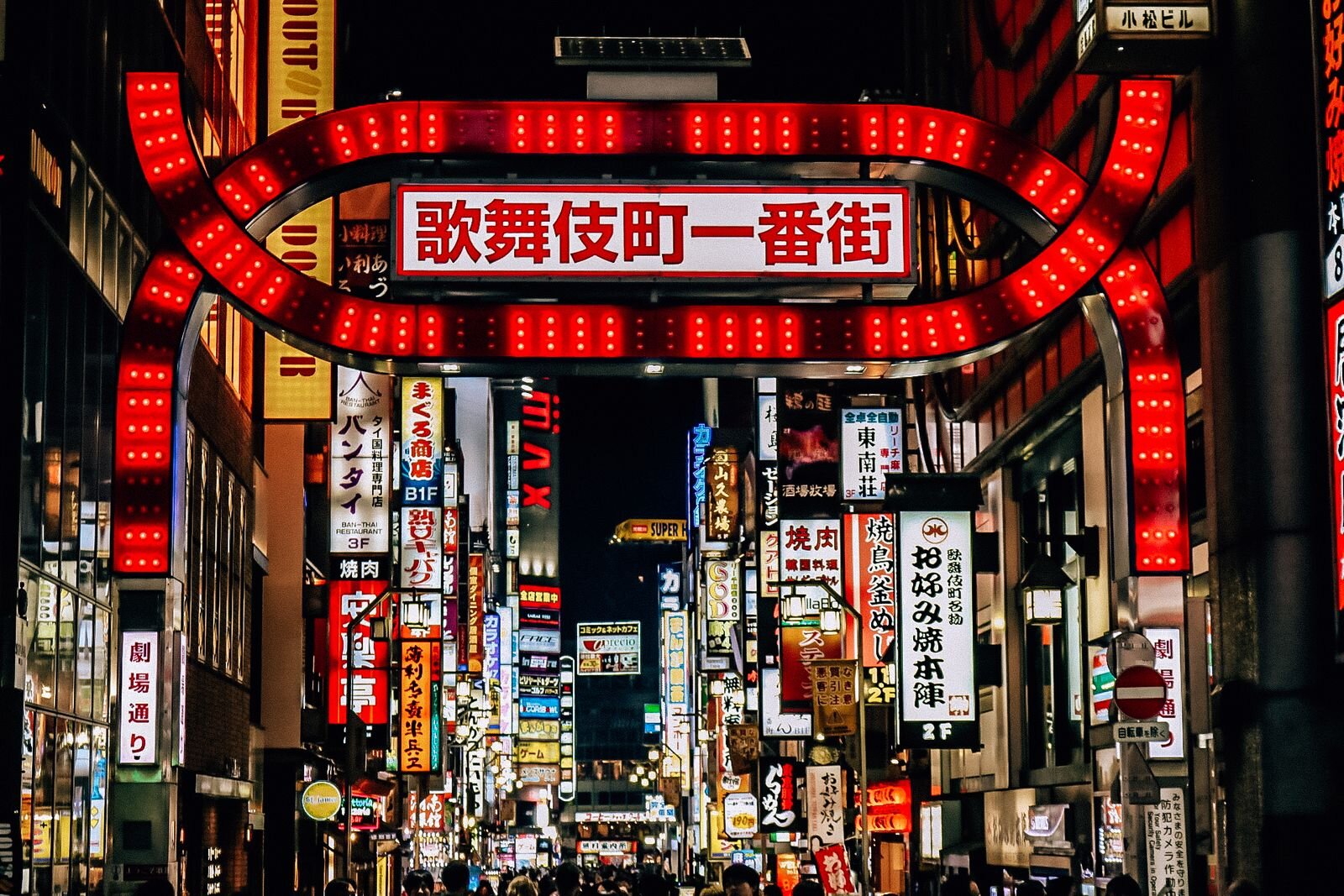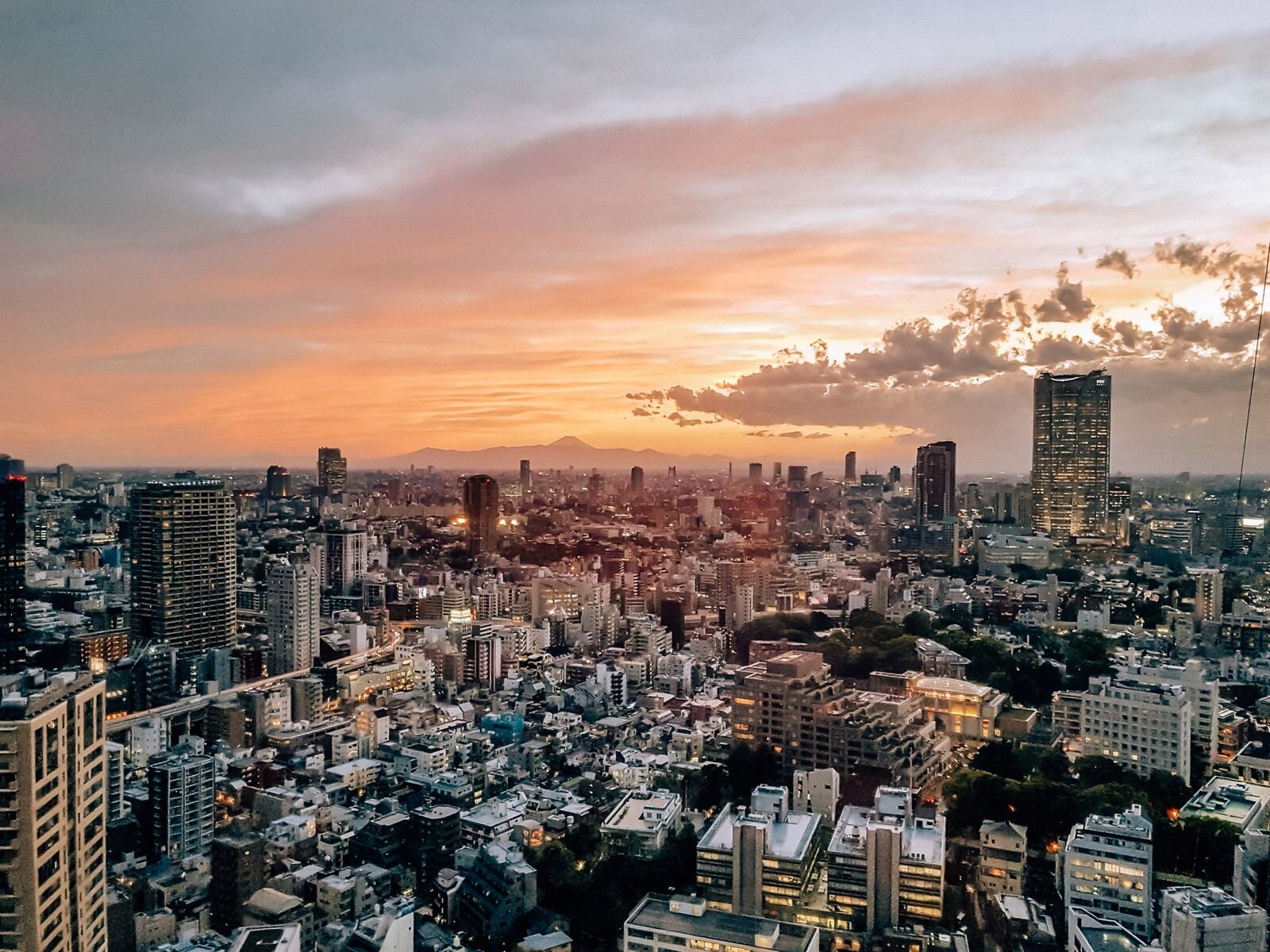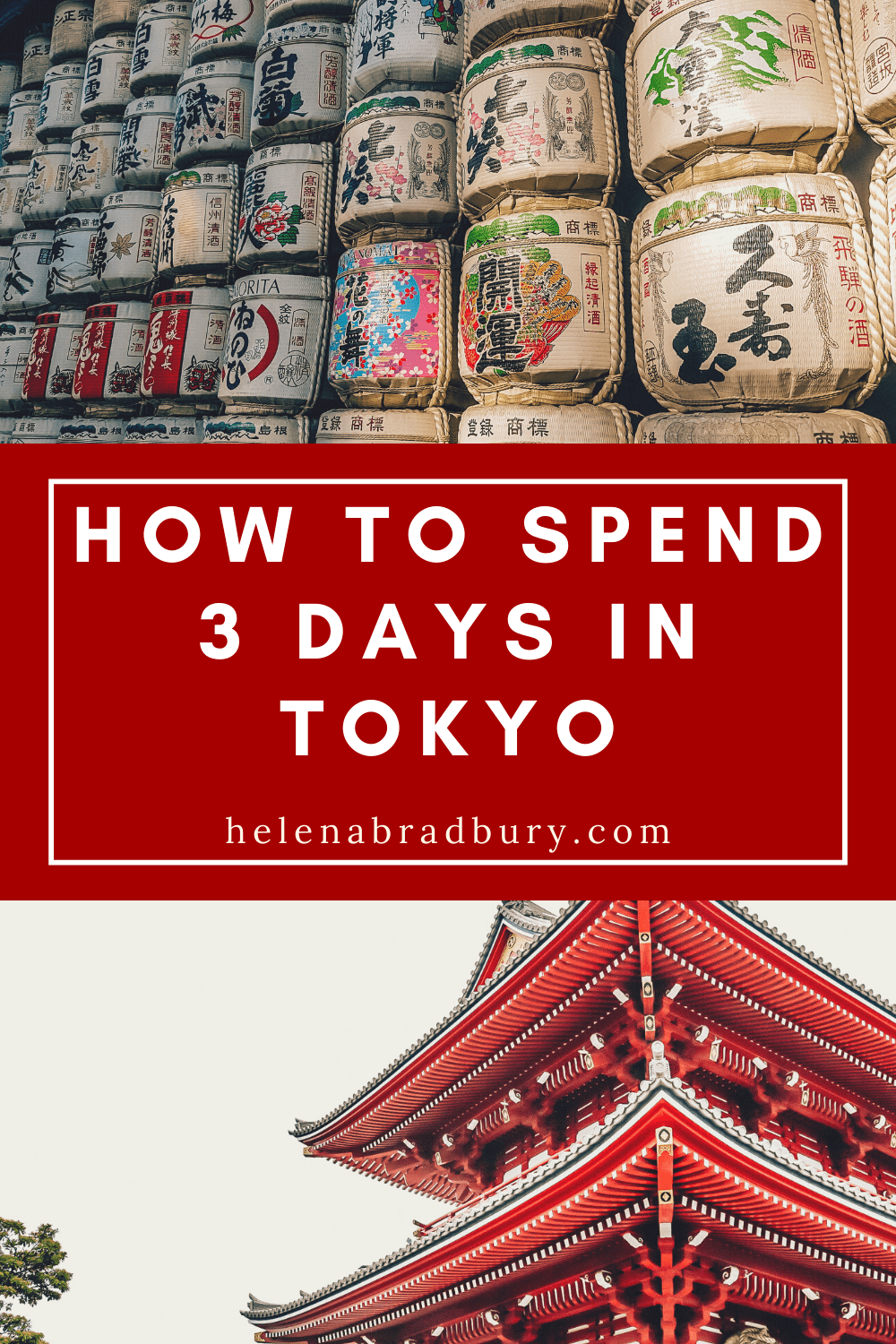Updated in March 2025
Planning a trip to Japan? Not sure how long to spend in Tokyo? Worried about how expensive Japan is? Whether you have a weekend in Tokyo or 3 days in Tokyo, this 3 day Tokyo itinerary tells you exactly how to visit Tokyo in 3 days and should reassure any worries you have and confirm why Japan is an unmissable country to experience in your lifetime!
I visited Japan for two months in 2017, I travelled through the cities and the countryside and it’s also where I met my partner. We’ve now both returned to Japan several times including getting engaged there in December 2023 - so we’ve hopefully perfected our Tokyo itinerary tips at this stage!
I visited Japan for the first time during the spring and while a couple of the parks I mention in this guide are particularly beautiful with the cherry blossom in bloom, the parks are so beautiful any time of year.
On my first trip, I was also recently out of university and travelling on a budget. So this guide tries to include as many free things to do in Tokyo or Tokyo activities which require just a small fee, so if you’re planning to visit Tokyo on a budget then this guide is for you!
If you’re visiting Japan, make sure you know about these tips and travel etiquette for first time visitors.
Disclosure: This post may contain affiliate links, which means I may receive a commission if you click a link and purchase something. While clicking these links won't cost you anything, they will help me to keep this site up and running! Check out the full disclosure policy for more details. Thank you so much!
Where to Stay in Tokyo for 3 days
Tokyo is huge and the options for places to stay can be overwhelming. I stayed in some great budget options in Japan, especially the capsule hostels, which were a lot of fun! I found being based in Shinjuku/Shibuya was easiest for everything I wanted to do.
On more recent trips, I found comfortable mid-range hotel options that were in great locations in Ginza, Roppongi and around Tokyo Tower.
Hostels and budget friendly hotels
Quirky Hostel - Book and Bed Tokyo Shinjuku (sleep in bookshelf capsules, a book lovers dream!)
Japanese Style Hostel with private rooms - Imano Tokyo Hostel (where I stayed on my first visit)
Budget hotel - Hotel Keihan Tokyo Yotsuya
Budget hotel chain - APA Ueno Ekimae APA (these rooms are very snug but you'll find one in every neighbourhood so they're super convenient)
Mid-range hotel options
Daiwa Roynet Hotel Nishi-Shinjuku
The Prince Park Tower, Toyko (incredible views of Tokyo Tower for a great price)
Luxury hotel options
The Tokyo EDITION, Toranomon (Has amazing rooftop bar with view of Tokyo Tower)
The best 3 day Tokyo itinerary: Day 1
Shinjuku Gyoen National Park
These beautiful gardens are found in the popular Shinjuku and Shibuya district of Tokyo and they are a real oasis in the centre of the city. Entry to the park and gardens is ¥500(~£2.70 or $3.40).
The gardens were originally the grounds for the Naito Family residence in the Edo period, but today the park is managed by the government and is open for all the public to enjoy.
If you’re visiting during spring, there are a large number of cherry blossom trees to enjoy and photograph, although during the cherry blossom season in Tokyo the park does get busy, so head there early if you want to photograph the trees without large groups of people.
Alternatively, head to the opposite side of the lake to capture a landscape shot of the park with the reflections of the blossom in the water.
If you are thinking of visiting during spring, you can track the progress of the blossom and when sakura season is predicted to peak here and find all the Tokyo cherry blossom locations here.
Shinjuku Gyoen National Park
Meiji shrine
Next, head to the Meiji Jingu Shrine, also located in Shibuya. As well as being a beautiful shrine and grounds, I enjoyed this shrine because of the nice, peaceful walk down the long track to reach it. On the walk you will also see the stacks of Sake barrels which make for great photos as well as the majestic torii gates.
Similarly to Shinjuku Gyoen National Park, the Meiji shrine also feels like a peaceful oasis in the middle of the busy city.
Entry to the shrine is free.
Please be respectful in the shrine and follow signs and instructions inside the complex.
Meiji shrine Tokyo
Metropolitan Government Building Observation Deck
The Metropolitan Government Building is also in Shinjuku and is recognisable by its twin tower structure. This is still active government offices so you are required to have your bags screened prior to entry for security reasons.
Although there are lots of observation decks and opportunities for great views in Tokyo, I’ve listed the Metropolitan Government Building because it is free entry.
The deck is popular because it stays open late, so you can enjoy night views of the city. If you visit just before sunset, this is peak time and be prepared for a 40 minute wait for the elevators. However, the line moved very quickly and I wasn’t waiting that long at all, more like 25 minutes.
I was able to get to the observation deck and enjoy the views across the city. On a clear day you can see Mount Fuji.
Another option for great views over the city is the recently opened Shibuya Sky observation deck. I’ve not been as it’s only opened recently, apparently the views are incredible but the tickets are ¥2200(~£12 or $15). You can save money and avoid the queue if you book online.
Sunset over Tokyo from Metropolitan Government Building Observation Deck
Golden Gai
After seeing sunset over the city, head back to Shinjuku and spend your evening in Golden Gai - a must on your 3 day Tokyo itinerary.
Small alleys of Golden Gai
Golden Gai is made up of six narrow alleyways with tiny bars which can often only accommodate up to 6 people at a time! So you might need to search a bit to find one with space.
Golden Gai is such a unique city experience and architecturally fascinating, be sure to snap lots of photos of the tiny alleyways and traditional storefronts. I met so many people in these tiny bars and we later went out to karaoke together!
Don’t be afraid to chat to people, Japanese people are very friendly and interested in you, even if there is a language barrier.
If you tire of Golden Gai, head out to the lights and sounds of Kabuchiko. The streets with their neon signs are dazzling and it feels like this part of the city never sleeps!
This is also the red light district, full of all night bars and restaurants, plus home to the famous Robot Restaurant. There are live theatre performances, band karaoke, bizarrely themed bars, all-night shopping. You name it, you can find it here and all through the night. Either research what’s on before your visit or wander around and see what takes your fancy!
Golden Gai bars
3 day Tokyo itinerary: Day 2
Sensoji Shrine
The Sensoji Shrine is located in Asakusa, so it’s a little bit of a futher trip if you’ve been based in Shinjuku like me!
This was my favourite shrine, decorated in vivid red, this is Tokyo’s oldest temple, finished in year 645! It is also the most visited spiritual site in the world with over 30 million visitors every year. Because of this, I would recommend visiting early if you want to avoid the crowds!
Sensoji Shrine Tokyo
Tokyo National Museum
After the Sensoji Shrine head over to the Tokyo National Museum. There is a small entry fee for this museum but it is only ¥1000(~£5 or $7) and considering how interesting and informative this museum is, the ticket price is extremely good value.
I’m not always a fan of visiting museums but this museum was engaging and interesting and I spent a long time there!
An alternative museum is the Samurai Museum in Shinjuku. It is more expensive (¥1900) and I have not visited but it does come highly recommended and there are daily samurai demonstrations.
Tokyo Imperial Palace
The Tokyo Imperial Palace is a great stop to check out quickly on your way from the museum.
The Imperial Palace is home to the Emperor and the Japanese Imperial Family, it also covers a huge area in the Chiyoda City, the centre of Tokyo.
You can only go inside the grounds on certain days of the year such as the Emperor’s birthday and New Year’s Day. There are guided tours of the gardens twice daily in Japanese and English if you would like to go in but since I was on a budget, I explored the outer Imperial Palace East Gardens.
Hie Shrine
Nearby the Imperial Palace is this lesser known shrine in Tokyo. The reason I like the Hie Shrine is because it has the continuous walkways of torii gates, similar to the Fushimi Inari shrine in Kyoto.
If you have time to stop here, I really recommend it.
Shibuya Crossing
Shibuya Crossing
Shibuya Crossing is the busiest pedestrian crossing in the world and I was determined to see and experience it!
You will find it easily as it’s labelled on Google Maps as “Shibuya Scramble Crossing”.
I used to recommend going to the Starbucks for an amazing view of the crossing for just the cost of a coffee (that’s where the above picture is taken from).
Unfortunately that Starbucks has now closed, but on our most recent trip we discovered Mags Park Rooftop Shibuya. This is a rooftop cafe bar, super simple and you just go up to the rooftop and buy 1 drink per person (they offer alcoholic and non-alcoholic options) and then you can stay for as long as you like to see the Shibuya Crossing from above (the view is in the picture below).
Shibuya Crossing seen from Mag’s Park Rooftop Bar
Harajuku and Japanese Karaoke
In the evening, head back to Harajuku and experience the fun and colour of the Harajuku district.
This is also the area where I met up with some Golden Gai friends and we went to a Japanese Karaoke. If you have the chance to do some karaoke on your 3 days in Tokyo I can’t recommend enough, it’s all part of the Japanese city experience!
Shinjuku at night, Tokyo
3 day Tokyo itinerary: Day 3
Tsukiji fish market
For sushi lovers, this one is for you. This huge fish market is famous for its tuna auctions, the atmosphere is amazing and I highly recommend buying some of the freshest sushi you’ll ever have. Definitely recommend going early for the freshest food, especially if you’re staying in the area and looking for the best things to do in Ginza.
Tokyo TeamLab Borderless
The Tokyo teamLab Borderless museum is not an attraction I visited on my trip as it wasn’t yet open in 2017. However I’ve heard so many great recommendations and seen incredible photos that I would be more than happy to spend £18/$21 on a ticket to see this exhibition.
This modern art museum uses light, mirrors, projections and colour to create interactive exhibits. This museum is popular so buy your tickets in advance to skip the queues and allow 3+ hours to explore it all.
While TeamLabs Borderless closed in 2022-23, TeamLabs Planets opened which is a similar experience with new exhibits. However TeamLabs Borderless is coming back in February 2024 in a new location in Tokyo - you can buy tickets here.
Tokyo Tower
Tokyo Tower
In case you hadn’t gathered, I love aerial viewpoints and this one was my favourite!
Tokyo Tower is a distinctive orange tower in the city which has 360 degree views of Tokyo and I was lucky enough to have a clear day so I could see Mount Fuji too (see the photo below).
Tickets are only ¥1200(~£6 or $8) for the main deck and ¥2800(£15 or $19) for the top deck, so I could definitely justify going up to the main deck, plus there was no time limit for how long I could spend up there. I went late in the afternoon and watched the sunset.
Be sure to take some photographs from the outside of this unique building too!
Tokyo skyline
Summary: the perfect three days in Tokyo
I hope this Tokyo 3 day itinerary gives you some inspiration for your trip to Tokyo, whether you’re there for 3 days or longer!
Tokyo can be an overwhelming city to plan a visit to because it’s so huge, however a 3 day Tokyo itinerary is a great amount of time to kick off your Japan itinerary - there’s still so much to see in the rest of the country!
FAQs: 3 day Tokyo itinerary
How many days do I need in Tokyo?
In an ideal world I would susuggest 4-5 days in Tokyo. However if you’re on a 10 day or 2 week Japan itinerary, your time is limited which i why I suggest 3 days in Tokyo so you have plenty of time to visit other places on your trip.
What is the best month to visit Tokyo, Japan?
Spring and autumn are popular seasons to visit Tokyo. Spring in Tokyo is usually March-April. Autumn is usually November. However I would say any time of year is great to visit Tokyo except in the peak summer (June-August) when the weather is extremely hot!
Is Tokyo cheap or expensive?
Cost is subjective but I would say that accommodation is expensive in Tokyo compared to the rest of Japan (maybe only Kyoto is similar). However it is possible to eat and get around very cheaply in Tokyo if you’re on a budget. Tokyo is an expensive place to live in terms of rent and cost of living, but it can be done cheaper as a visitor.
What is the best area in Tokyo to stay?
There are so many neighbourhoods to stay in, it really depends what you are wanting to see and do. Shibuya and Shinjuku are great but have become very expensive in recent years. Ginza and Roppongi are areas I usually look in.
Is Tokyo friendly to tourists?
Yes, Tokyo is a very tourist friendly city. Although don’t expect to be starting up friendly conversations with locals on the train or in cafes. Most Japanese people keep themselves to themselves however the city itself is tourist friendly in terms of signage, helpful information in English and lots of info points to help you get around.
How English friendly is Tokyo?
Tokyo is probably the most English friendly city in Japan.
How much is a meal in Tokyo?
You can eat for as little as 1000-2000 yen if you get food at konbini or supermarkets. Small local restaurants are also very affordable, so are many izakayas in and around train stations.
Save this post to help you plan your future Tokyo 3 day itinerary!
Flights: I use Expedia to find great flights and the best deals all over the world, they have regular sales and offers so I always check their website. I also check CheapOair to find cheap deals on round trip flights.
Car Rental: I love the customer service I've always gotten and the variety of options with Rental Cars. But for short notice rentals, I've been using Expedia for the last year, they always seem to have great one-day rates or last-minute rates from the main rental companies.
Accommodation: I prefer the flexibility of booking accommodation with Booking.com so I can cancel or change my reservation without a fee or only pay on arrival for most properties. For longer or more unique stays I prefer AirBnB because you can get the long stay discount, you can also find more unique properties and book experiences with talented locals and businesses. For my budget trips, I always stay in hostels and book through Hostelworld because they have great guarantees if anything does go wrong. If you arrive and your booking is not at the property, they refund the full deposit AND give you $50 extra credit.
Tours and organised trips Although I don’t use tours that often, I do like to book local experiences or day trips once I reach my destination. For that I use GetYourGuide because it has the biggest selection and variety of tour and experience options.
Travel Insurance: I currently use SafetyWing Nomad Insurance. Which allows me to pay a rolling monthly fee to cover my long term travels.
My camera gear and equipment: I use a Canon 77D with an 18-135mm lens or a 50mm lens. And a DJI Mavic Mini Drone. For all my gear including laptops, tripods and more camera accessories read my travel photography gear guide.
